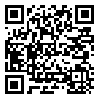Sat, Dec 13, 2025
[Archive]
Volume 16, Issue 2 (June 2020)
IJEEE 2020, 16(2): 215-227 |
Back to browse issues page
Download citation:
BibTeX | RIS | EndNote | Medlars | ProCite | Reference Manager | RefWorks
Send citation to:



BibTeX | RIS | EndNote | Medlars | ProCite | Reference Manager | RefWorks
Send citation to:
Karimabadi A, Hajiabadi M E, Kamyab E, Shojaei A A. Integrated Preventive and Predictive Maintenance Markov Model for Circuit Breakers Equipped With Condition Monitoring. IJEEE 2020; 16 (2) :215-227
URL: http://ijeee.iust.ac.ir/article-1-1380-en.html
URL: http://ijeee.iust.ac.ir/article-1-1380-en.html
Abstract: (4944 Views)
The Circuit Breaker (CB) is one of the most important equipment in power systems. CB must operate reliably to protect power systems as well as to perform tasks such as load disconnection, normal interruption, and fault current interruption. Therefore, the reliable operation of CB can affect the security and stability of power network. In this paper, effects of Condition Monitoring (CM) of CB on the maintenance process and related costs are analyzed. For this, A mathematical formulation to categorize and model equipment failures based on their severity is developed. By CM, some of the high severity failures, named major failures, can be early detected and be corrected as a minor failure. This formulation quantifies the effect of CM on the outage rate and Predictive Maintenance (PDM) rate of equipment. Also, by combining the predictive maintenance to preventive maintenance, the Integrated Preventive and Predictive Maintenance Markov model is presented to analyze the effect of CM on the maintenance process. Finally, the optimal inspection rates of CBs based on the minimum maintenance cost in the traditional and the proposed Markov model are determined. To verify the effectiveness and applicability of the method, the proposed approach is applied to the CBs of KREC in Iran.
Keywords: Maintenance , Condition Monitoring , Markov Model , Optimal Inspection Rate , Circuit Breaker
Type of Study: Research Paper |
Subject:
Power Systems Reliability
Received: 2018/11/10 | Revised: 2019/06/17 | Accepted: 2019/06/29
Received: 2018/11/10 | Revised: 2019/06/17 | Accepted: 2019/06/29
| Rights and permissions | |
 |
This work is licensed under a Creative Commons Attribution-NonCommercial 4.0 International License. |








